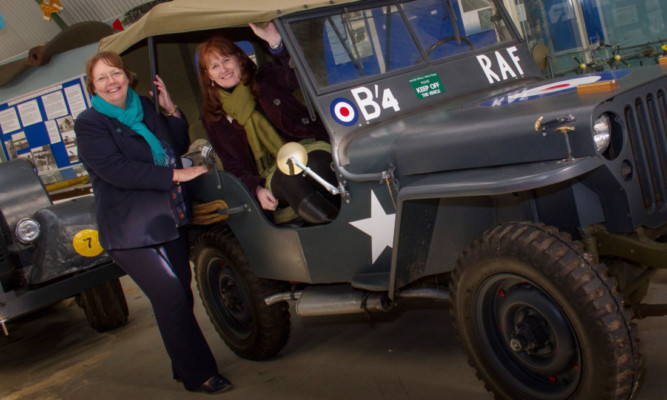Custodians of Britain’s first operational military airfield have been hailed for their efforts in preserving its history.
Alison McInnes, MSP for North East Scotland, and Joanne Orr, chief executive officer of Museums Galleries Scotland (MGS), visited Montrose Air Station Heritage Centre to see the work of its volunteers.
Their visit was part of a series of MSP trips to museums with MGS to engage them in championing their local museums and learning of their achievements and challenges.
They were welcomed by Daniel Paton, curator at the Montrose air museum, along with other volunteers who guided them around the attraction and gave them an insight to the range of ongoing work.
Of particular interest was the replica of the first BE2a biplane to land in France in 1914, which is being lovingly and painstakingly built, as part of the First World War commemorative exhibition.
The BE2a project is a hugely impressive task that has gained support from the Heritage Lottery Fund and which also has a £20,000 target for public donations.
An ambitious task, it began as a way of marking 100 years since the start of the First World War. The aim is to recreate an authentic replica of Lieutenant Hubert Dunsterville Harvey-Kelly’s aeroplane, which flew from Montrose in 1914.
Inspiration came from an old photograph of Harvey-Kelly taking a break in Dover alongside the BE2a as he made his way to war in 1913. He was the first of the No2 Royal Flying Corps to arrive at the French battlefields at Amiens.
Starting last summer in the freshly built Lieutenant Ross Robertson hangar and using original technical drawings as reference, the work is reported to be ahead of schedule.
Hands-on volunteers vary, from the skilled craftsman to those who are quickly acquiring skilled craft.
To ensure it is as authentic as possible, parts have been flown in from as far afield as Australia and the United States.
Impressed by their efforts and the wider vitality of the centre, Joanne Orr said: “They are shining examples of what can be achieved. It is the first air station and they are not just presenting it, they are bringing it to life.”
She said the volunteers and the centre itself played a very active part in the local community and contributed to a “wonderful infrastructure of museums in Scotland” at a time where public services were under great scrutiny.
Ms Orr added: “What we are seeing is an example of a huge range of skills and knowledge, but also that they are growing their knowledge. That is useful to other museums and it builds capacity in Scotland at a time when traditional skills are starting to disappear.”
Alison McInnes said: “It is more than being about heritage, it is about what you can do for your community and also about what the volunteers here get from working at the museum.
“What has touched me is the range of volunteers here and the range of different profiles, with young people being involved as well.”
Photo by Angus Pictures
